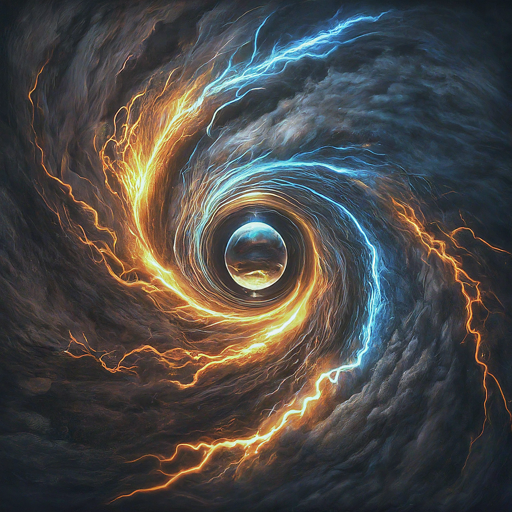[ Part 1] Unraveling the Fabric of Reality: From Newton to Quantum Mechanics
In the grand tapestry of scientific discovery, the evolution from classical physics to quantum mechanics and relativity theory represents a profound shift in our understanding of the universe. This journey, marked by groundbreaking insights and paradigm-shifting concepts, reveals the complex and often counterintuitive nature of reality.
At the heart of this scientific revolution was Isaac Newton, whose conception of fixed space and time laid the foundation for classical mechanics. Newton's development of differential calculus and the laws of motion ushered in an era of rigorous determinism, where the cosmos was seen as causal and determinate. Early gaps in these calculations were attributed to divine intervention, a notion later dispensed with by Laplace, who resolved these mathematical inconsistencies.
While Newtonian mechanics excelled in explaining fluid dynamics and the theory of heat, it stumbled when confronted with the electromagnetic experiments of Faraday and Maxwell. It was Maxwell's introduction of the concept of the electromagnetic field, or electrodynamics, that challenged the Newtonian paradigm. This notion of a force field existing independently of object interaction was revolutionary, differing fundamentally from the direct, interaction-based forces of Newtonian mechanics.
Maxwell himself grappled with these ideas, initially attempting to reconcile them with the concept of ether. However, it was Einstein who recognized electromagnetic fields as physical entities in their own right, capable of propagating through empty space. This recognition was a crucial step away from the ether theory and towards a new understanding of the universe.
The introduction of relativity theory and atomic physics further dismantled the classical concepts of absolute space and time. Solutions to the Schrödinger equation, for instance, showed that electrons could only occupy certain energy levels, introducing the concept of band gaps in solid-state physics. Einstein's general theory of relativity, positing that gravity can bend space-time, challenged Euclidean geometry and the very fabric of our understanding of the universe.
Rutherford's experiments, revealing that atoms are mostly empty space, along with the dual nature of subatomic particles, underscored the quantum leap in our comprehension of matter. The discovery of quanta of energy by Max Planck, and the realization that photons are massless particles traveling at the speed of light, further highlighted the departure from deterministic laws.
Perhaps most disruptively, the uncertainty principle demolished the classical laws of determinism, introducing a probabilistic framework to the behavior of particles at the quantum level. This principle, emphasizing the inherent limitations in measuring both the position and momentum of particles, underscores the fundamental unpredictability at the heart of quantum mechanics.
The transition from Newton's deterministic universe to the probabilistic realms of quantum mechanics and the curved space-time of relativity reflects a monumental shift in scientific thought. It challenges us to rethink our place in the universe, the nature of reality, and the laws that govern it. In this journey, we find not just the intricacies of the physical world, but a deeper harmony in nature's laws, as envisioned by Einstein. This evolution of thought, from the mechanics of the macroscopic world to the quantum and relativistic realms, continues to inspire and challenge our understanding of the cosmos.


Comments
Post a Comment